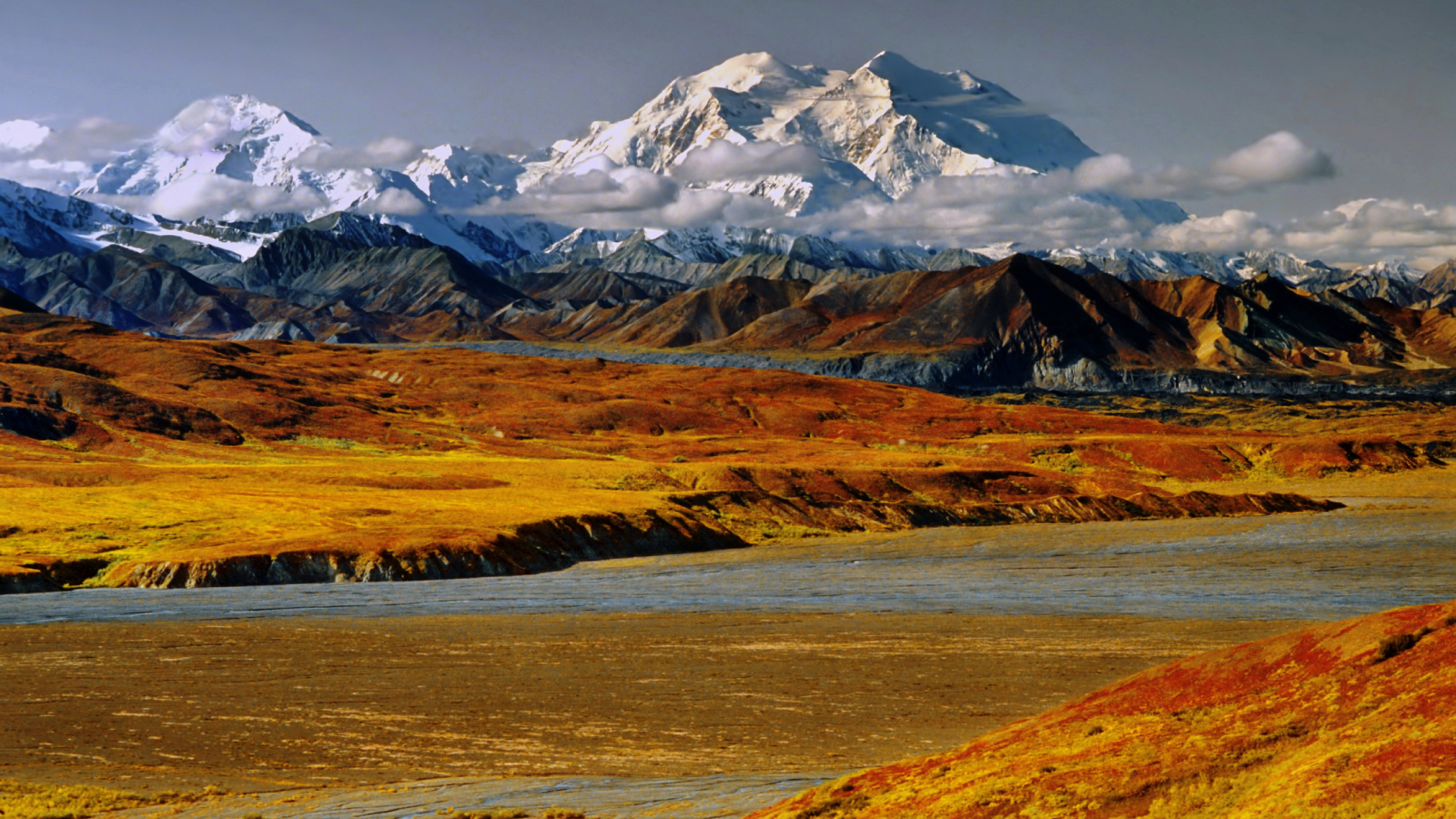Scientists may have accidentally found mystery magma reservoir in volcanoless region of Alaska
While tracking seismic activity on Denali, scientists stumbled upon an anomaly that could indicate the presence of magma.

Scientists may have accidentally discovered magma bubbling beneath a volcanoless region of Alaska.
Many geologists have long thought that the highest peak in North America, Denali (formerly known as Mount McKinley), should be a volcano, because it's positioned just 60 miles (100 kilometers) above one of the most active fault zones in the U.S. Yet, despite being bordered by volcanoes to its east and west, this area has not shown the telltale signs of molten rock or hot springs at its surface. This prompted a nickname for the region: the Denali volcanic gap.
However, a team studying seismic activity in the area recently uncovered evidence of a magma reservoir about 7 miles (11 km) beneath the surface, according to a study published in December 2023 in the Journal of Geophysical Research: Solid Earth.
"Denali is situated above a downgoing subducting plate, and in most tectonic settings on Earth like this, you have volcanoes at the surface, such as Chile, Mexico, Pacific Northwest, and most of the Aleutians," study author Carl Tape, a professor of geophysics at the University of Alaska Fairbanks, told Live Science in an email. "We were surprised, though not shocked" to find evidence of the magma, he said.
In 2019, Tape and his team headed to the Denali volcanic gap region to collect data following a magnitude 7.1 earthquake that hit Anchorage in November 2018 and was expected to produce a series of aftershocks. They placed hundreds of seismometers (instruments that measure ground motion in the earth) along the highway near the Denali fault and a few directly above the fault. This allowed the team to collect recordings of local and distant earthquakes that could be used to document the variations of the crust and uppermost mantle of the Alaska subduction zone.
"Amazingly, the Earth is in a constant state of ambient ground motion," Tape said. This is mainly caused by ocean waves interacting and sending forces down to the seafloor. "These randomly propagating waves can be used to image the subsurface properties of the Earth," Tape said.
Get the world’s most fascinating discoveries delivered straight to your inbox.
Then, while they were sifting through their data, the researchers noticed a "seismic-velocity anomaly" — an area where the waves slowed down as they passed through the ground. This spot most likely indicates the presence of a reservoir of slow-moving, molten magma, according to the study.
"This particular anomaly lies in the crust below two unusual volcanic deposits (Buzzard [Creek] Maars and Jumbo Dome) and above where the subducting slab dips into the mantle," Tape said. In the past, scientists have found rocks in the Denali volcanic gap with the same chemical signatures as volcanoes in the Aleutian Arc, which spans around 1,550 miles (2,500 km) along the Bering Sea and Alaskan mainland.
It is important to note that this amount of magma and the size of the volcanoes here are much smaller than the volcanoes in the active part of the volcanic arc, Dennis Newell, a geochemist at Utah State University who was not involved in the study, told Live Science in an email. He added that this could be fluids other than magma, or a mix of other fluids and magma.
To confirm the presence of magma, scientists will need a clearer image of the anomaly, which will require them to install seismic monitoring instruments directly above the mystery spot — a difficult feat in the treacherous terrain of inland Alaska.
"The next stage — getting off the highway and into this rugged land — will be much more complicated," Tape said.

Kiley Price is a former Live Science staff writer based in New York City. Her work has appeared in National Geographic, Slate, Mongabay and more. She holds a bachelor's degree from Wake Forest University, where she studied biology and journalism, and has a master's degree from New York University's Science, Health and Environmental Reporting Program.



